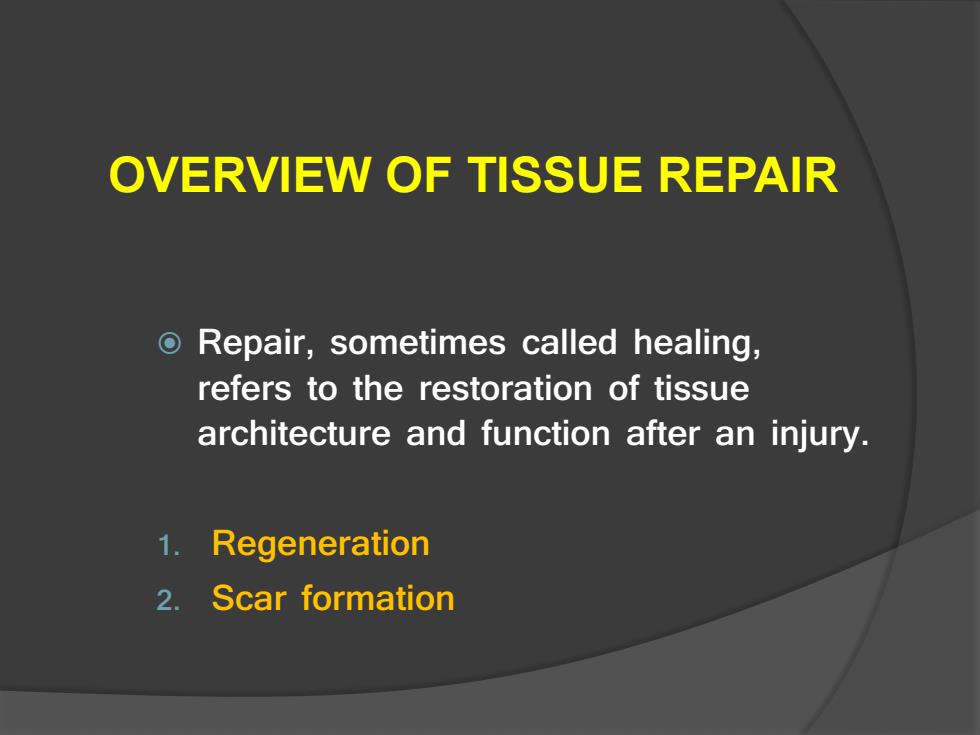
OVERVIEW OF TISSUE REPAIR Repair,sometimes called healing, refers to the restoration of tissue architecture and function after an injury. 1.Regeneration 2.Scar formation
OVERVIEW OF TISSUE REPAIR Repair, sometimes called healing, refers to the restoration of tissue architecture and function after an injury. 1. Regeneration 2. Scar formation
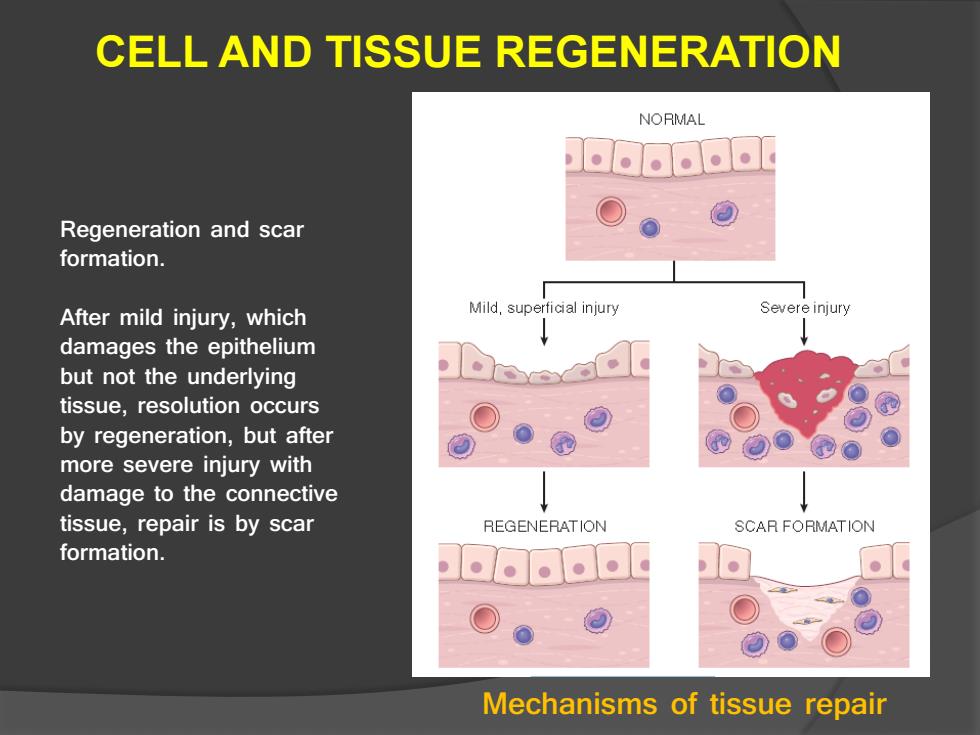
CELL AND TISSUE REGENERATION NORMAL Regeneration and scar formation. After mild injury,which Mild,superficial injury Severe injury damages the epithelium but not the underlying tissue,resolution occurs by regeneration,but after more severe injury with damage to the connective tissue,repair is by scar REGENERATION SCAR FORMATION formation. 。。●g Mechanisms of tissue repair
Regeneration and scar formation. After mild injury, which damages the epithelium but not the underlying tissue, resolution occurs by regeneration, but after more severe injury with damage to the connective tissue, repair is by scar formation. Mechanisms of tissue repair CELL AND TISSUE REGENERATION
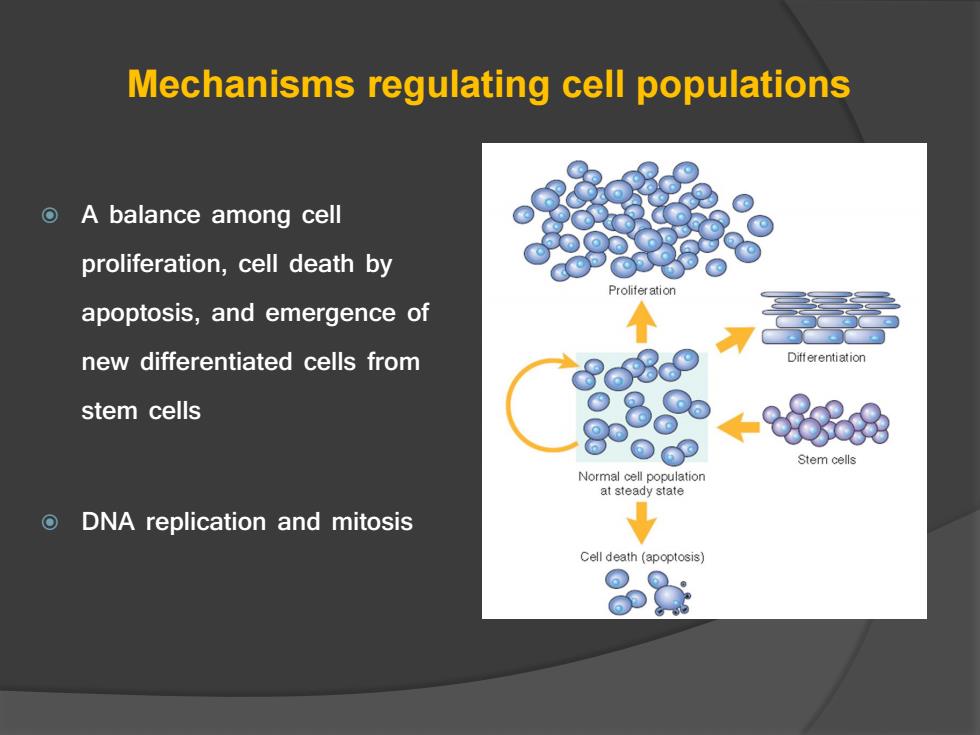
Mechanisms regulating cell populations A balance among cell proliferation,cell death by Prolifer ation apoptosis,and emergence of new differentiated cells from Differentiation stem cells 8 ← od Stem cells Normal cell population at steady state DNA replication and mitosis Cell death (apoptosis)
Mechanisms regulating cell populations A balance among cell proliferation, cell death by apoptosis, and emergence of new differentiated cells from stem cells DNA replication and mitosis

Proliferative Capacities of Tissues Labile (continuously dividing)tissues o Stable tissues O Permanent tissues
Proliferative Capacities of Tissues Labile (continuously dividing) tissues Stable tissues Permanent tissues
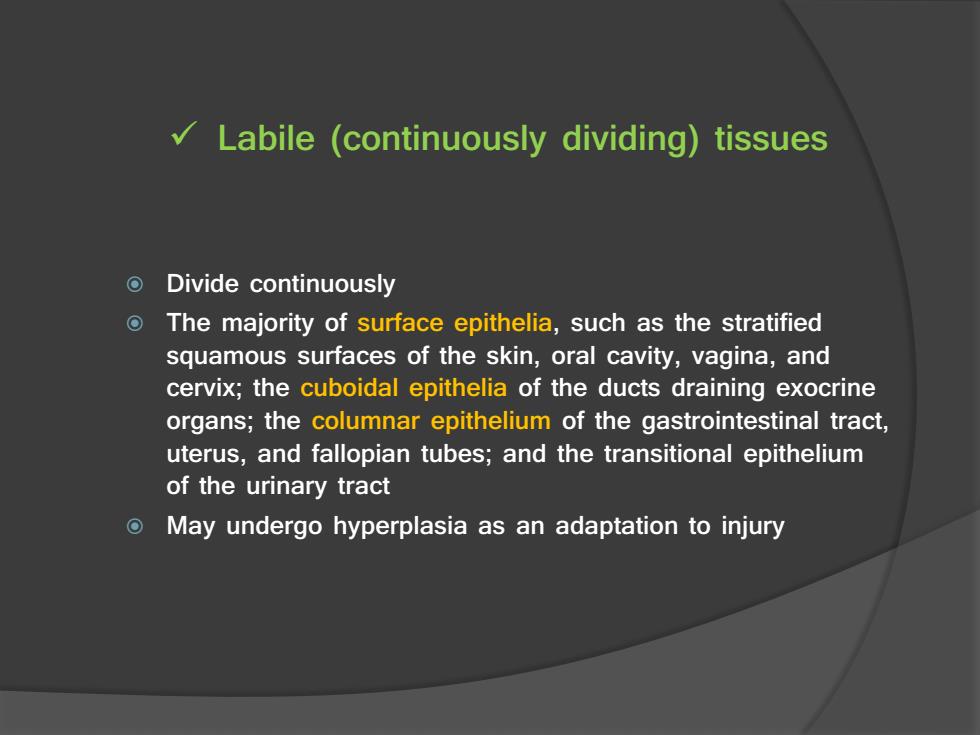
Labile (continuously dividing)tissues o Divide continuously o The majority of surface epithelia,such as the stratified squamous surfaces of the skin,oral cavity,vagina,and cervix;the cuboidal epithelia of the ducts draining exocrine organs;the columnar epithelium of the gastrointestinal tract, uterus,and fallopian tubes;and the transitional epithelium of the urinary tract May undergo hyperplasia as an adaptation to injury
Labile (continuously dividing) tissues Divide continuously The majority of surface epithelia, such as the stratified squamous surfaces of the skin, oral cavity, vagina, and cervix; the cuboidal epithelia of the ducts draining exocrine organs; the columnar epithelium of the gastrointestinal tract, uterus, and fallopian tubes; and the transitional epithelium of the urinary tract May undergo hyperplasia as an adaptation to injury
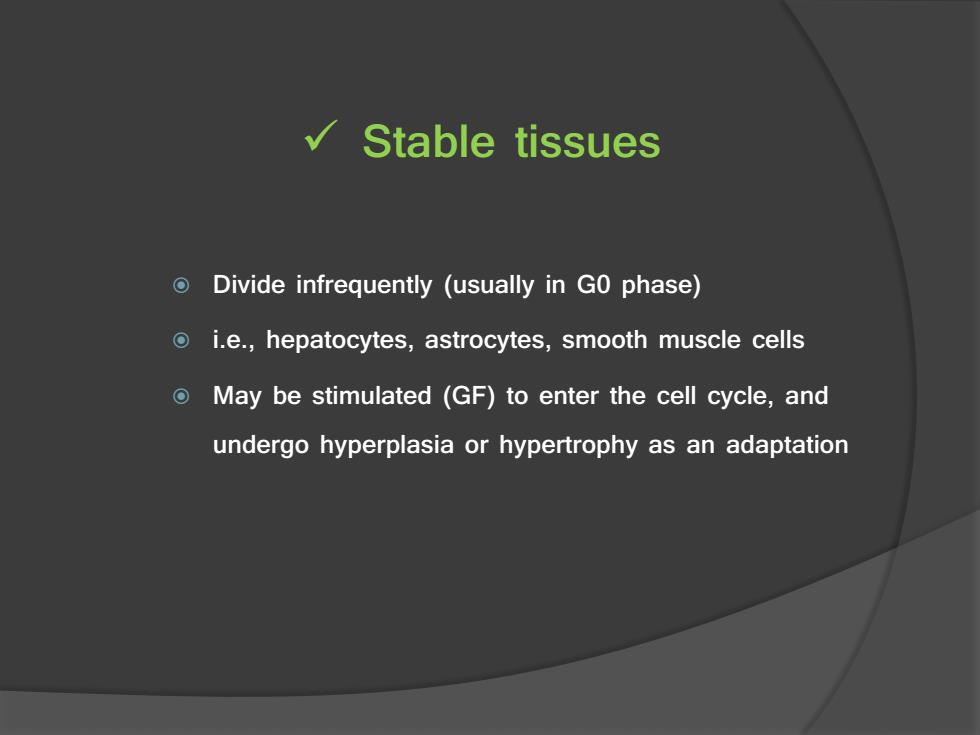
√Stable tissues Divide infrequently (usually in GO phase) o i.e.,hepatocytes,astrocytes,smooth muscle cells May be stimulated (GF)to enter the cell cycle,and undergo hyperplasia or hypertrophy as an adaptation
Stable tissues Divide infrequently (usually in G0 phase) i.e., hepatocytes, astrocytes, smooth muscle cells May be stimulated (GF) to enter the cell cycle, and undergo hyperplasia or hypertrophy as an adaptation
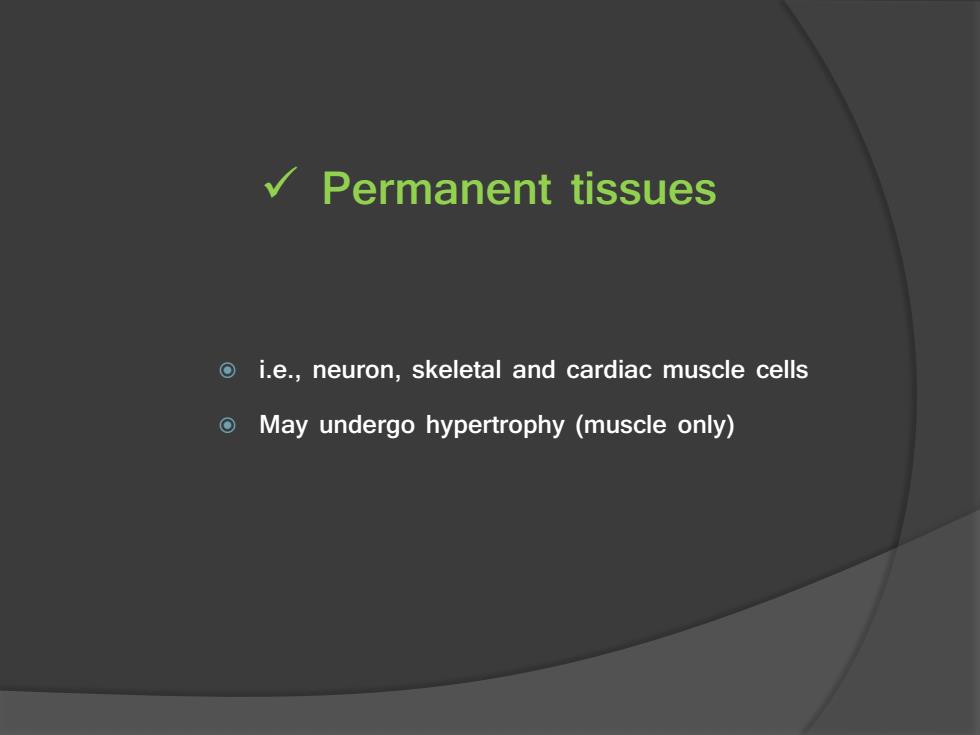
√Permanent tissues i.e.,neuron,skeletal and cardiac muscle cells May undergo hypertrophy (muscle only)
Permanent tissues i.e., neuron, skeletal and cardiac muscle cells May undergo hypertrophy (muscle only)
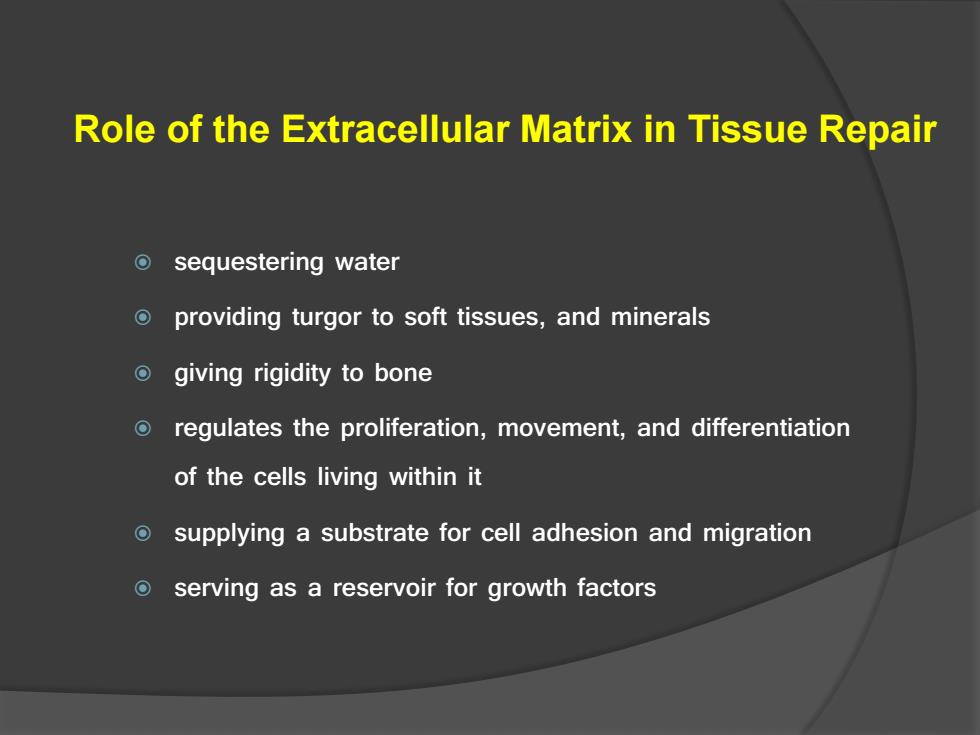
Role of the Extracellular Matrix in Tissue Repair o sequestering water o providing turgor to soft tissues,and minerals giving rigidity to bone o regulates the proliferation,movement,and differentiation of the cells living within it supplying a substrate for cell adhesion and migration o serving as a reservoir for growth factors
Role of the Extracellular Matrix in Tissue Repair sequestering water providing turgor to soft tissues, and minerals giving rigidity to bone regulates the proliferation, movement, and differentiation of the cells living within it supplying a substrate for cell adhesion and migration serving as a reservoir for growth factors

Extracellular matrix o Two basic forms of o Three basic components ECM 1.Collagens and elastins 1.Basement membranes 2.Proteoglycans and hyaluronan 2.Interstitial matrix 3.Adhesive glycoproteins
Extracellular matrix Three basic components 1. Collagens and elastins 2. Proteoglycans and hyaluronan 3. Adhesive glycoproteins Two basic forms of ECM 1. Basement membranes 2. Interstitial matrix
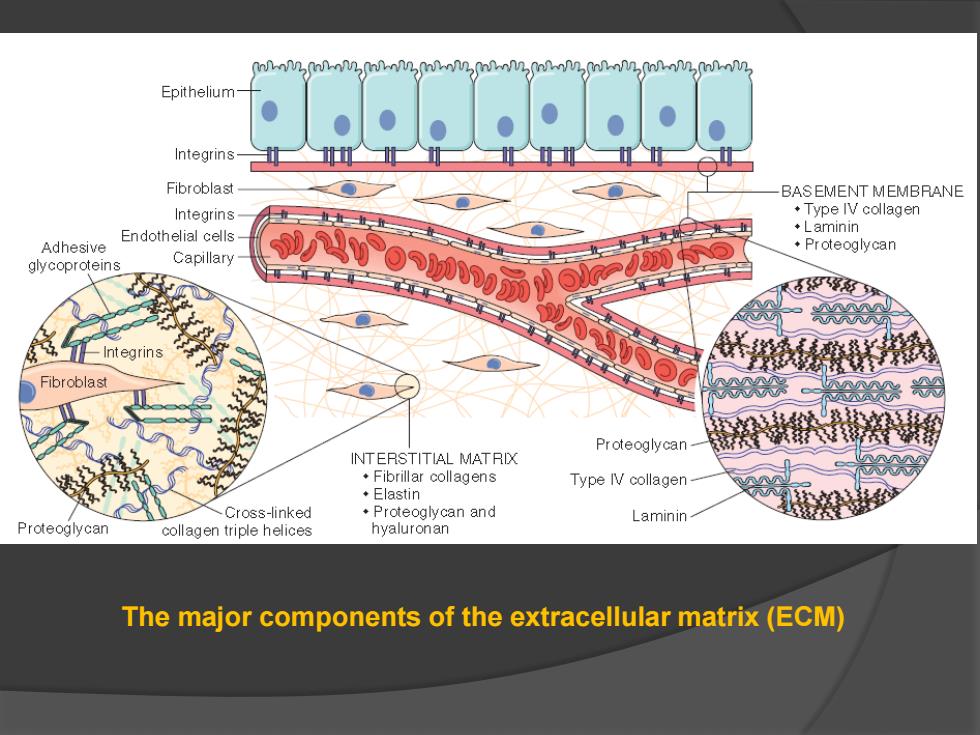
Epithelium Integrins Fibroblast BASEMENT MEMBRANE Integrins Type IV collagen Endothelial cells ◆Laminin Adhesive Proteoglycan glycoproteins Capillary 瓶欢 -Int egrins 孩封 Fibroblast Pr oteoglycan INTERSTITIAL MATRIX ·Fibrillar collagens Type IV collagen- ·Elastin -Cross-linked Proteoglycan and Laminin- Proteoglycan collagen triple helices hyaluronan The major components of the extracellular matrix(ECM)
The major components of the extracellular matrix (ECM)